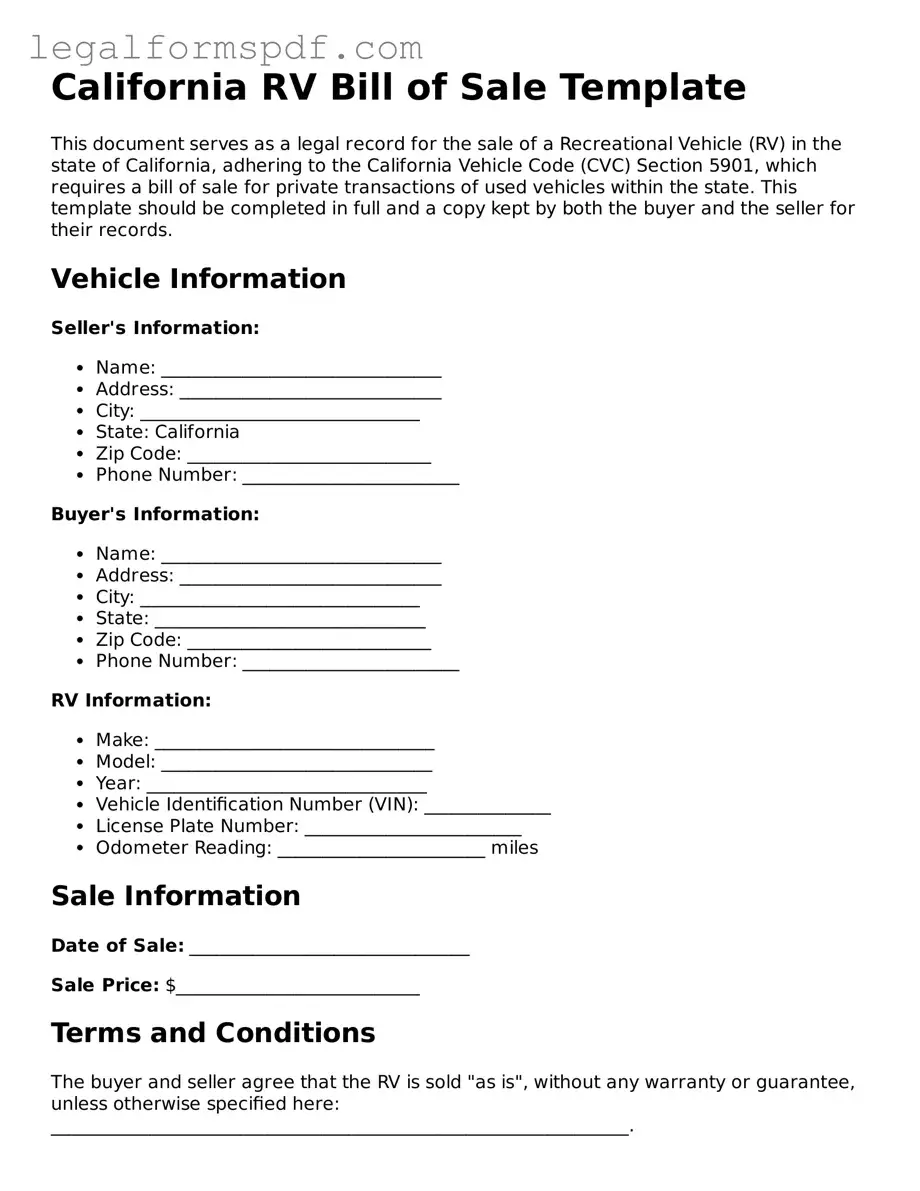What is a California RV Bill of Sale form?
A California RV Bill of Sale form is a written document that records the sale or transfer of ownership of a recreational vehicle (RV) from the seller to the buyer within the state of California. It provides proof that the buyer has purchased the RV and outlines the details of the transaction, such as the sale price, date of sale, and information about the RV and the parties involved.
Why do I need a California RV Bill of Sale?
Having a California RV Bill of Sale is crucial for several reasons. It serves as a legal record of the sale, protecting both the buyer and the seller in case of disputes. For the buyer, it's proof of purchase and ownership. For the seller, it releases them from liability associated with the RV once it's sold. Additionally, it's often required for registration and title transfer of the RV in California.
What information should be included in a California RV Bill of Sale?
A comprehensive California RV Bill of Sale should contain specific information to ensure it's effective and complies with state laws. This information typically includes the full names and addresses of both the buyer and the seller, a detailed description of the RV (including make, model, year, VIN), the sale price, payment details, and the sale date. It should also have signatures from both parties and possibly a witness or notary public.
Is a notary required for a California RV Bill of Sale?
In California, notarizing an RV Bill of Sale is not a legal requirement. However, having the document notarized can add an extra layer of legal protection and authenticity, ensuring that the signatures on the form are legitimate.
How does a California RV Bill of Sale affect the registration and titling of the RV?
The California RV Bill of Sale plays a significant role in the registration and titling process. The buyer must present this document to the California Department of Motor Vehicles (DMV) as proof of ownership when applying for registration and title transfer of the RV. Without it, completing these processes can be challenging.
Can I create a California RV Bill of Sale form myself?
Yes, you can create a California RV Bill of Sale form yourself as long as it includes all the necessary information and complies with California law. There are also templates available online that can help ensure you don't miss any critical details. However, it's essential to verify that any template you use is current and specific to California.
What happens if I lose my California RV Bill of Sale?
If you lose your California RV Bill of Sale, it's advisable to seek a replacement as soon as possible. You can contact the seller for a copy or, if you are the seller, provide a copy to the buyer. If none of these options are viable, drafting a new document with the same details and having both parties re-sign it can also serve as a valid solution.
Are digital signatures accepted on a California RV Bill of Sale?
In an increasingly digital world, California recognizes the validity of digital signatures under specific laws and regulations. Therefore, a digital signature on an RV Bill of Sale would generally be considered acceptable as long as it meets the state's requirements for digital transactions. Nonetheless, it's recommended to confirm with the local DMV or a legal expert to ensure compliance.
